Hi FACNM Community,
Evacuation is complex and difficult to plan for. It depends greatly on the type of emergency, or the duration of the emergency, and the needs of the community being evacuated. Fire practitioners, emergency managers, and local community organizations across the country work hard to include flexible evacuation and safety plans into their work each day.
One thing about evacuation is for sure — the more we work within our communities before an incident to plan and communicate about evacuation, the better our response will be. This involves personal wildfire evacuation planning as well as community-level planning.
With this in mind, this week our Wildfire Wednesdays newsletter will focus on both personal evacuation planning as well as planning guides that support community-level planning. We pull in materials from the National Fire Adapted Communities network (thank you!) that we hope will support New Mexico communities in preparing for 2023 and beyond.
Stay safe,
Gabe
Personal Evacuation Planning
For individual residents and homeowners wanting to consider their personal wildfire evacuation plan, the Ready, Set, Go! (en español) personal action guide is a great place to start. This guide helps residents be Ready with preparedness understanding, be Set with situational awareness when fire threatens, and to Go, acting early when a wildfire starts.
The Ready, Set, Go! guide is designed to be prepared well in advance of a wildfire and includes check lists and emergency supplies lists to support communication within your household.
There is a special section about ranches and farms that will help you consider how to evacuate livestock, protect valuable equipment, and more. Animal evacuation takes careful planning and communication to those that live around you. Start these conversations early and check-in about them annually to make sure you have a clear plan.
En Español
Community-Level Evacuation Planning
If you are looking for a resource to help you or your community work through the evacuation planning process, this FREE, 2020 Federal Emergency Management Agency (FEMA) guide is a great start.
This guide takes a whole-community approach, provides an overview of key concepts and critical considerations and dives into the planning process itself.
Communication Resources
Communication Planning
Evacuation and warning wireless emergency alert template in Spanish from California.
If you are looking for tips and tools to help you communicate more effectively during evacuation, there are several great resources available to you:
The Department of Homeland Security document, Best Practices in Wireless Emergency Alerts, contains guidance for establishing wireless emergency alerts as well as information on setting up a training and drilling program.
FEMA also has a toolkit available for those who routinely issue alerts and warnings. The Alerts, Warnings, and Notifications Program Planning Toolkit contains a step-by-step, FREE, web-based app that helps you create a customized plan for alerts and warnings. Users can input their own information, guided by prompts and informed by many of the available resources, and then save a Microsoft Word document that can be further edited and refined.
The Federal Communications Commission website on multilingual alerting contains general guidance for issuing alerts and warnings in multiple languages. Some states, such as California, have created evacuation alert and warning templates in multiple languages.
Communication Materials for Livestock and Animals
Example of stickers and placards for your home from the ASPCA.
Communication with those residents in rural areas where animals and livestock is a consideration is unique and requires different messaging. Here a few resources specific to that community:
The American Veterinary Medicine Association has an excellent planning considerations resource that includes an equine and livestock evacuation kit checklist.
For those with small animals, the Humane Society recommends making an evacuation plan for your pets.
You can also receive a FREE pet safety pack from the American Society for the Prevention of Cruelty to Animals by signing up for their news and alerts.
Modeling and Tools
The Resilience Analysis and Planning Tool Storymap
Our ability to model behavior, traffic flow and evacuation vulnerability continues to increase. Several tools are available to help communities plan.
The Resilience Analysis and Planning Tool (RAPT) is a FREE tool developed by FEMA to help communities analyze available data layers during the planning process. The website contains an overview, how-to videos and the free tool itself. This storymap helps to explain what RAPT is, what it does and how communities can use it to increase their resiliency and decrease their risk.
For those who live in Oregon or Washington, research and an interactive map can help communities determine their vulnerabilities. Evaluating Rural Pacific Northwest Towns for Wildfire Evacuation Vulnerability provides vulnerability rankings for close to 700 communities in the rural Pacific Northwest. Roads are evaluated for capacity, directionality, connectivity and more.
Research is currently underway to develop a simulation for wildfire evacuation. This platform, called, WUI-NITY: A Platform for the Simulation of Wildland-Urban Interface Fire Evacuation Webinar, combines simulations of both wildfire and human behavior to help emergency managers plan for evacuation.
Evacuation Planning for Access and Functional Needs
There is no perfect blueprint for evacuating communities ahead of a wildfire. Even so, there are inclusive planning resources for evacuations to go as smoothly as possible for people with many different needs.
FEMA has a guide specifically for integrating functional needs into general population shelters, and NFPA’s evacuation guide for people with disabilities breaks down planning considerations for specific needs. FAC Net held a recent webinar on how to engage people with access and functional needs in emergencies, covering communication tools and shelter accommodations. Emergency Medical Services for Children (EMSC) has a guide specifically about supporting kids with special needs during a disaster (available in multiple languages).



